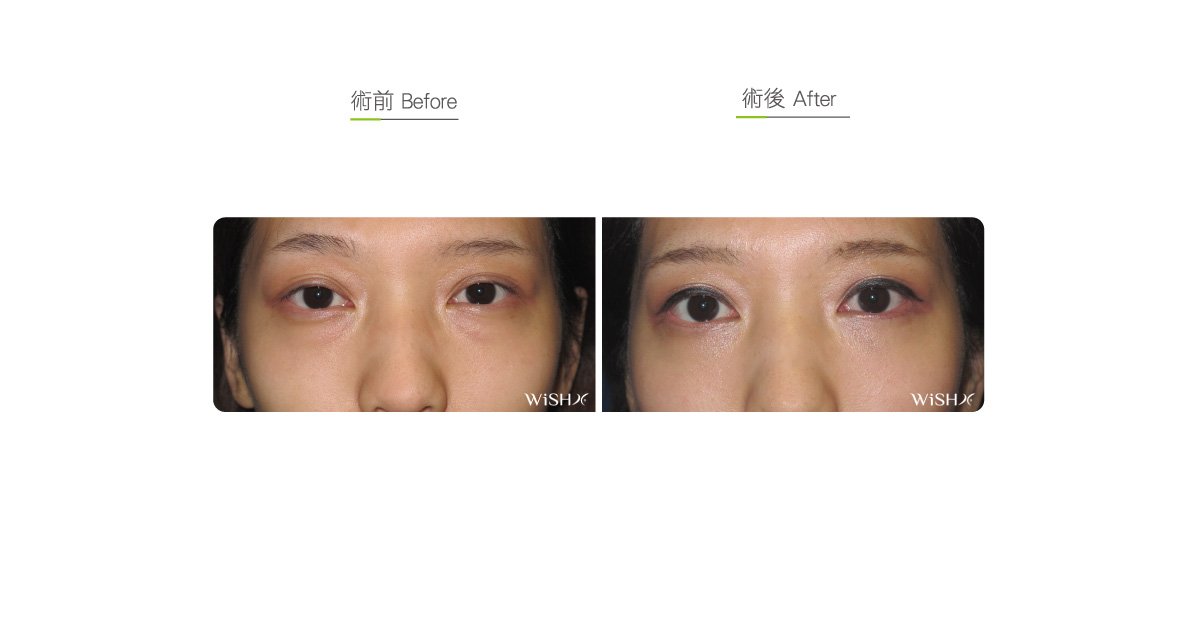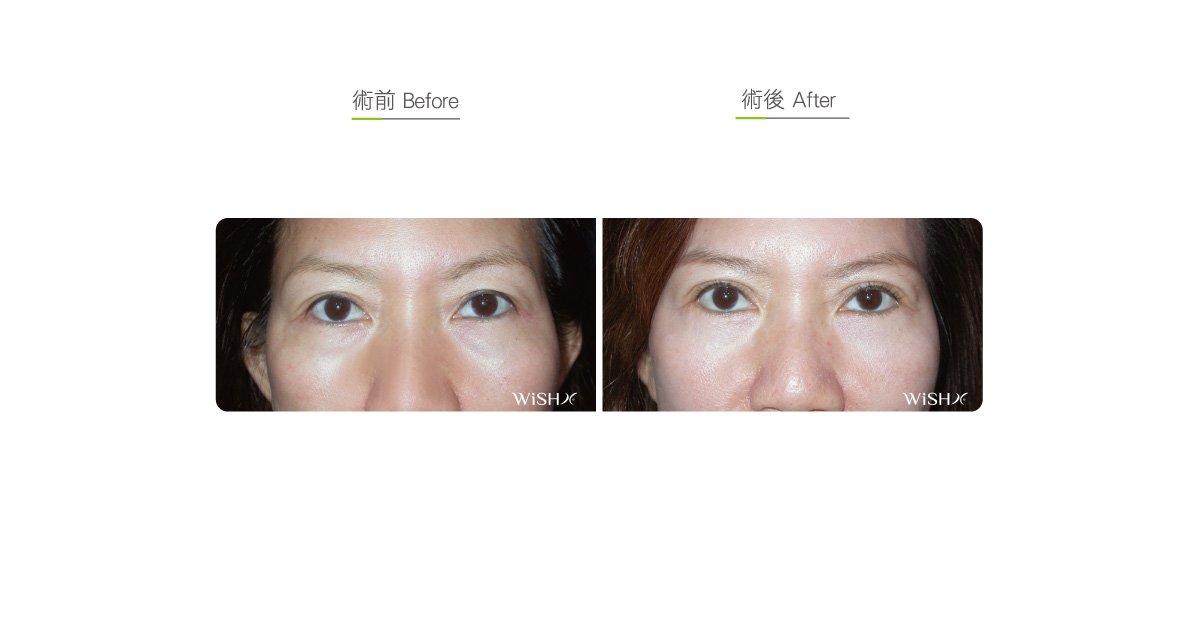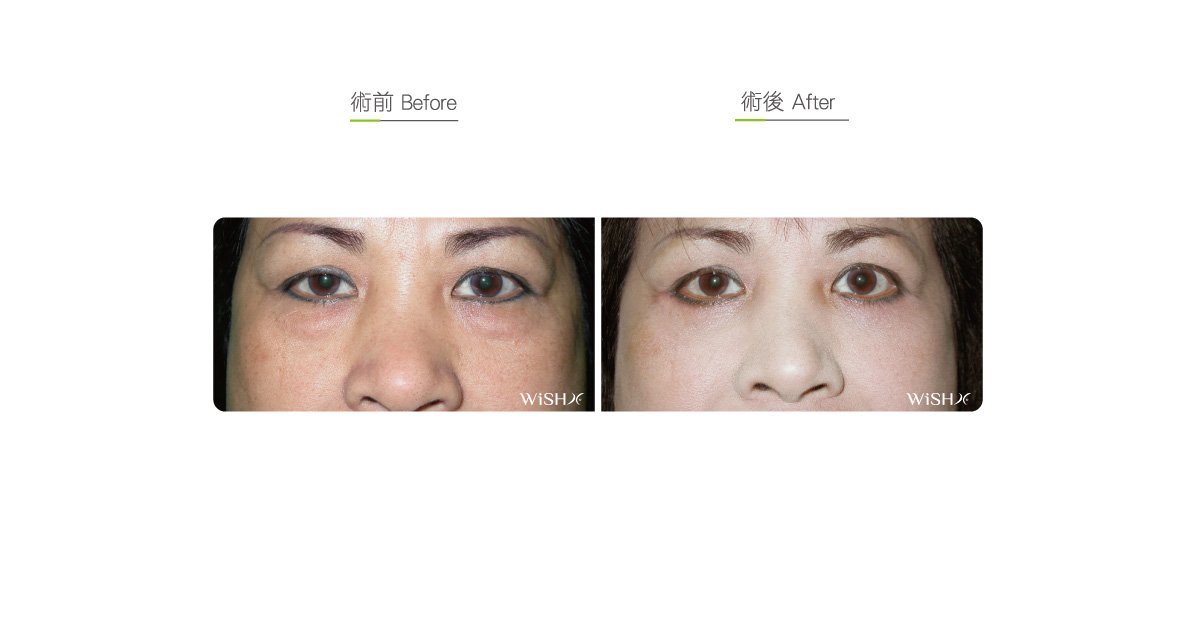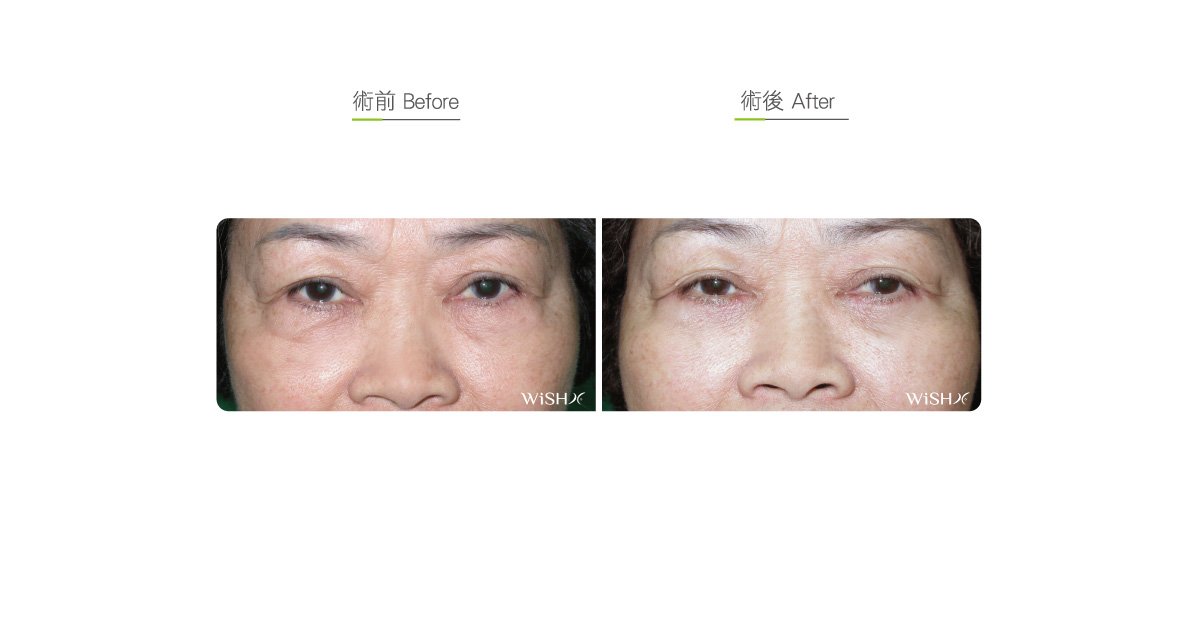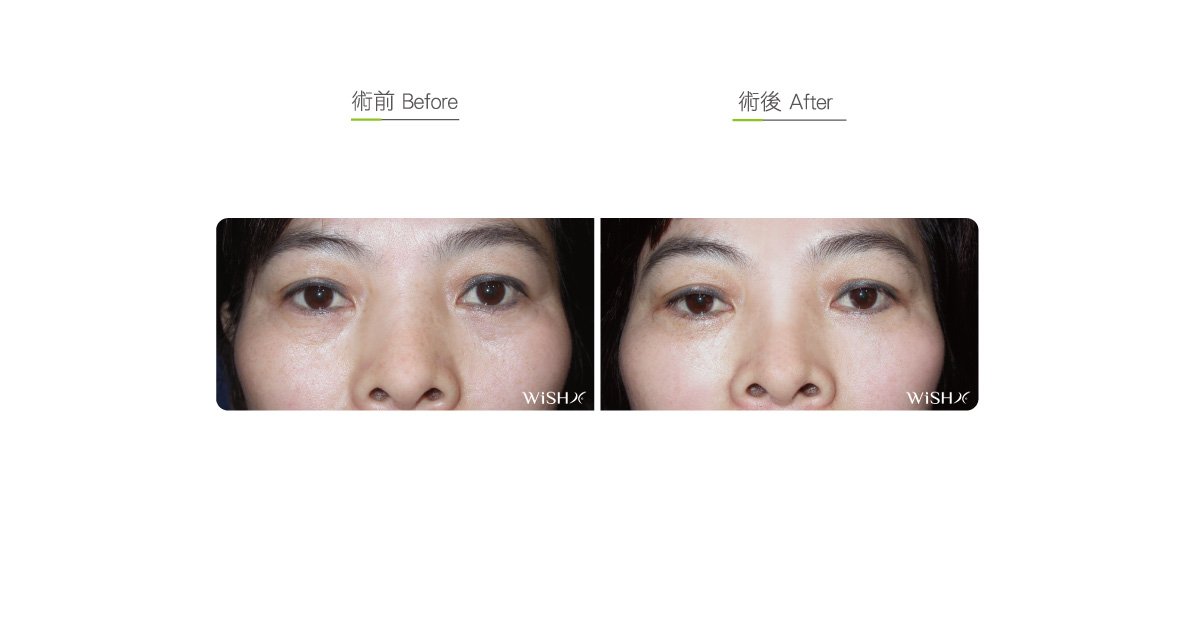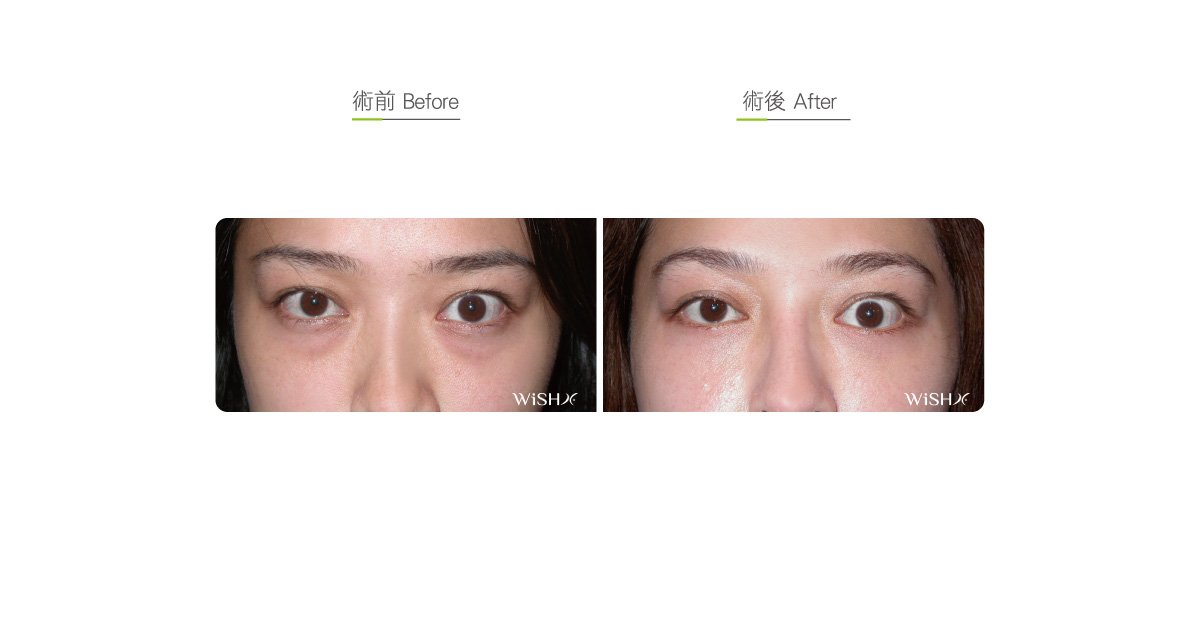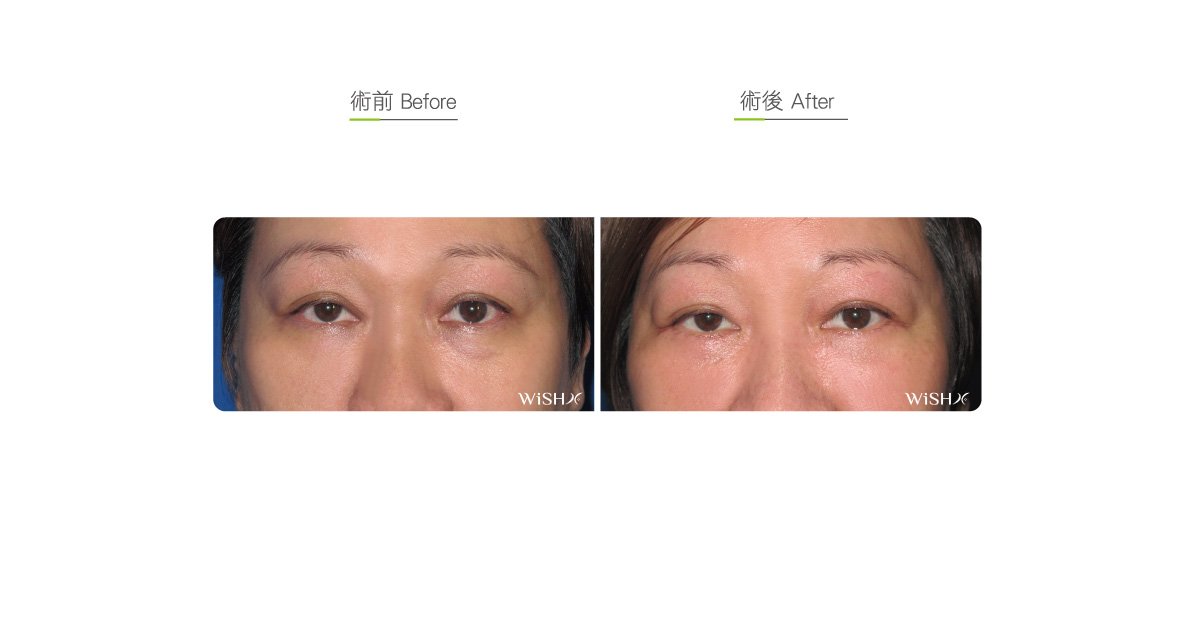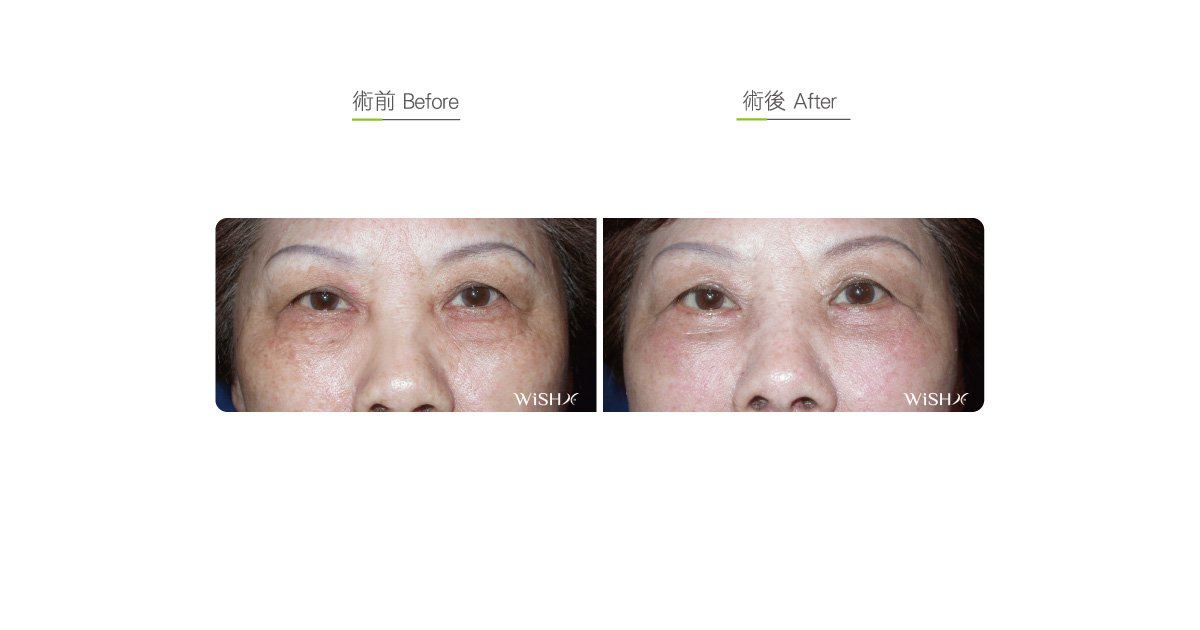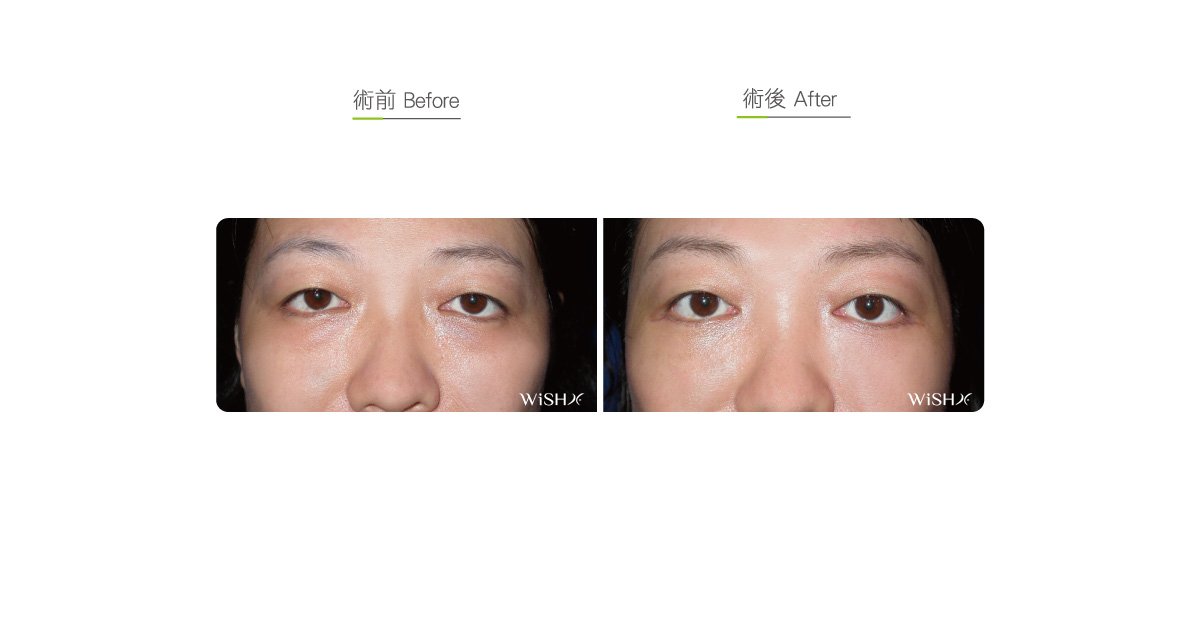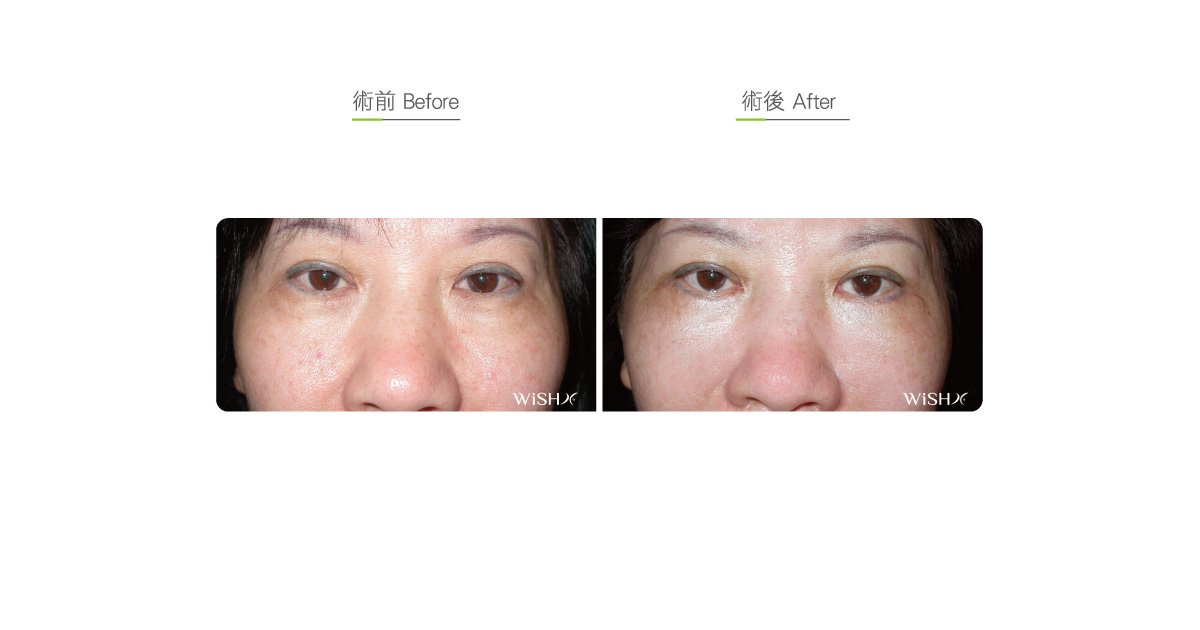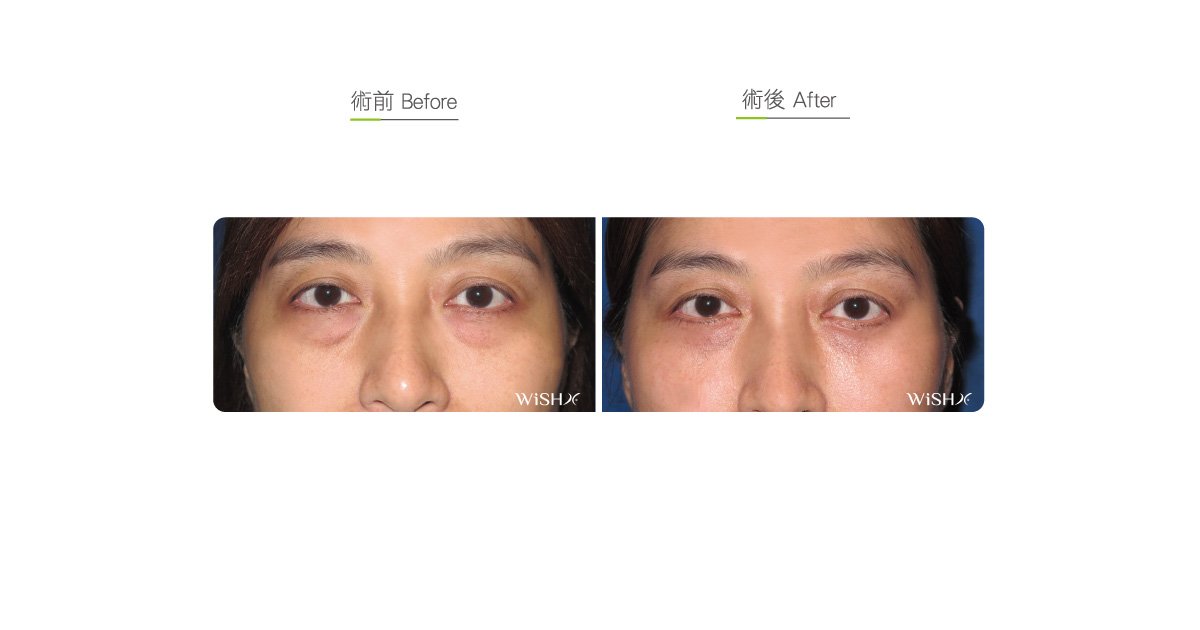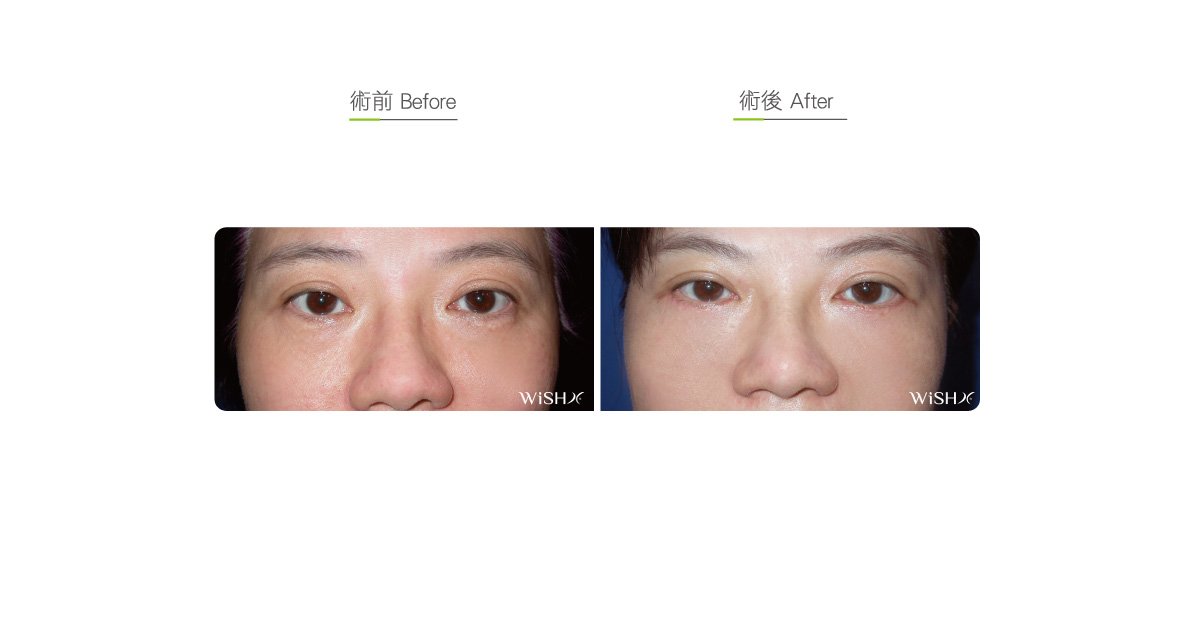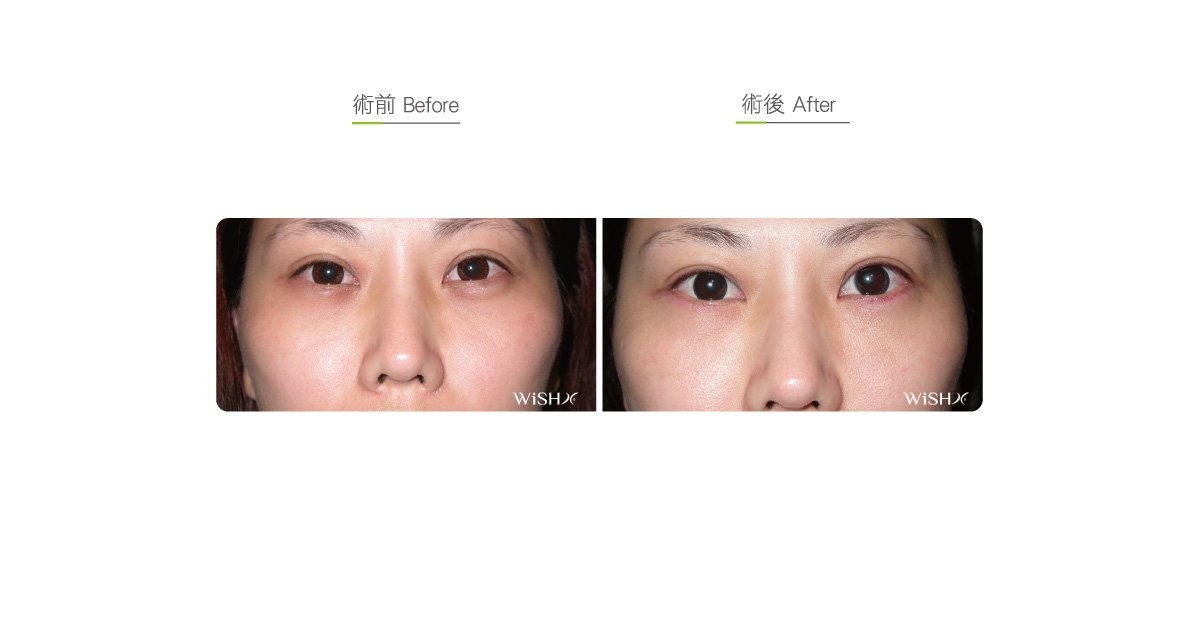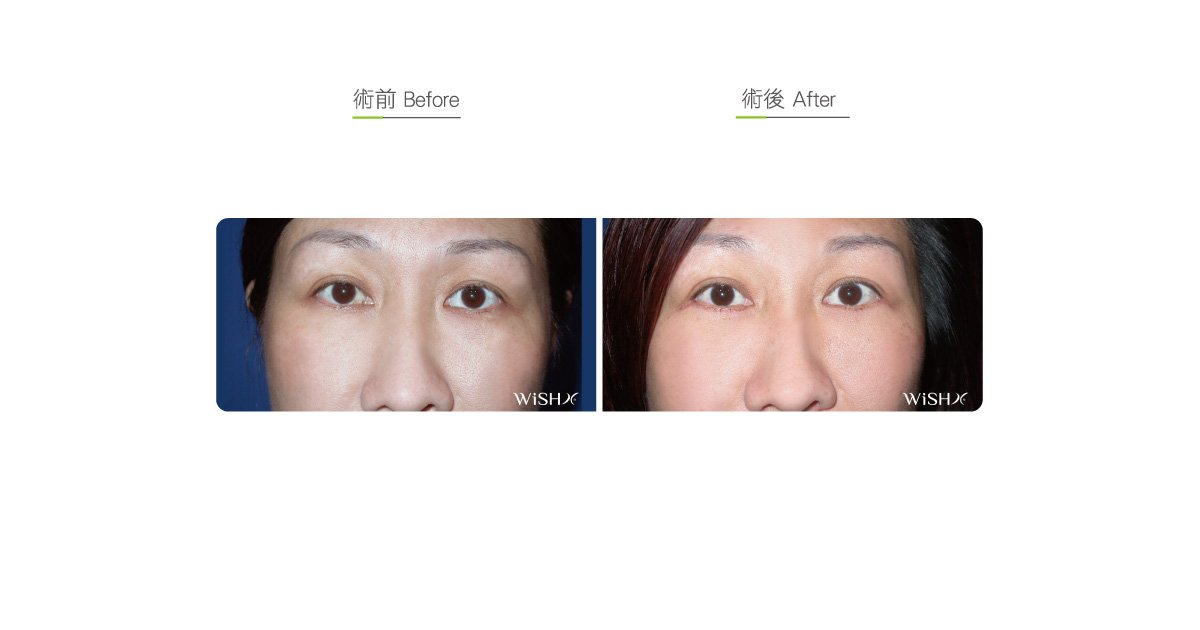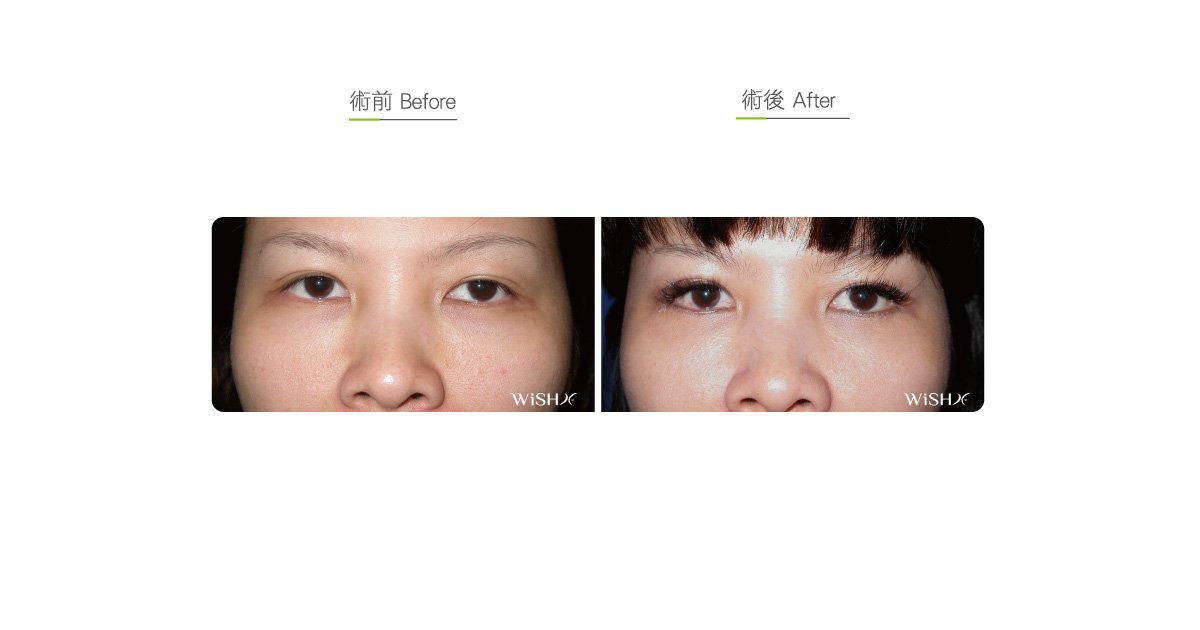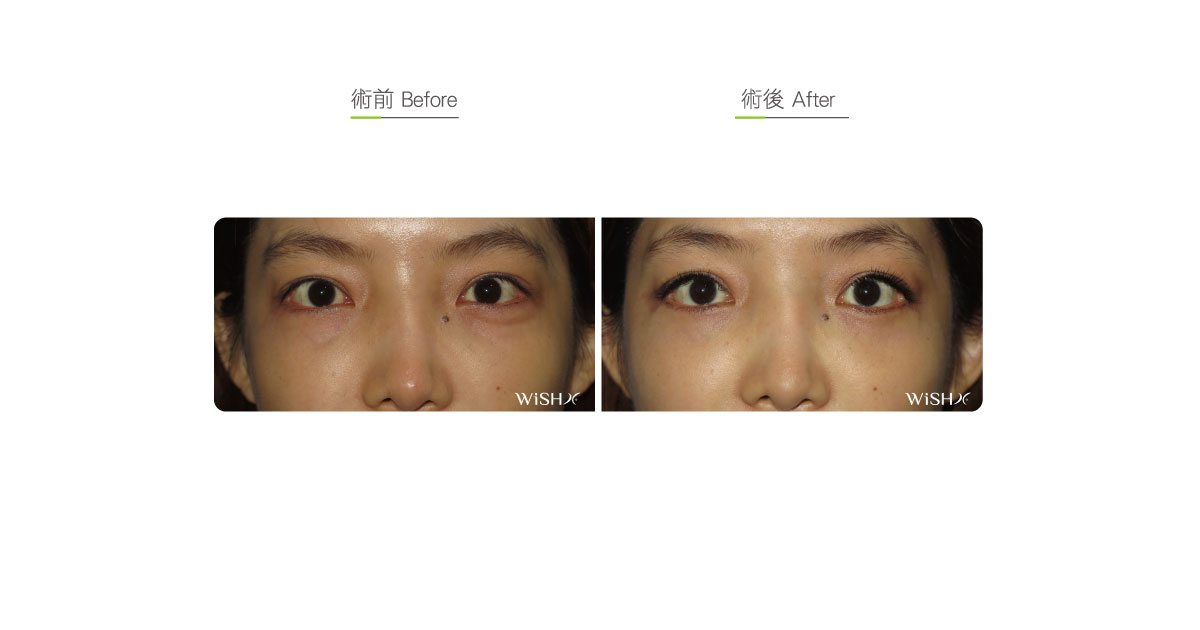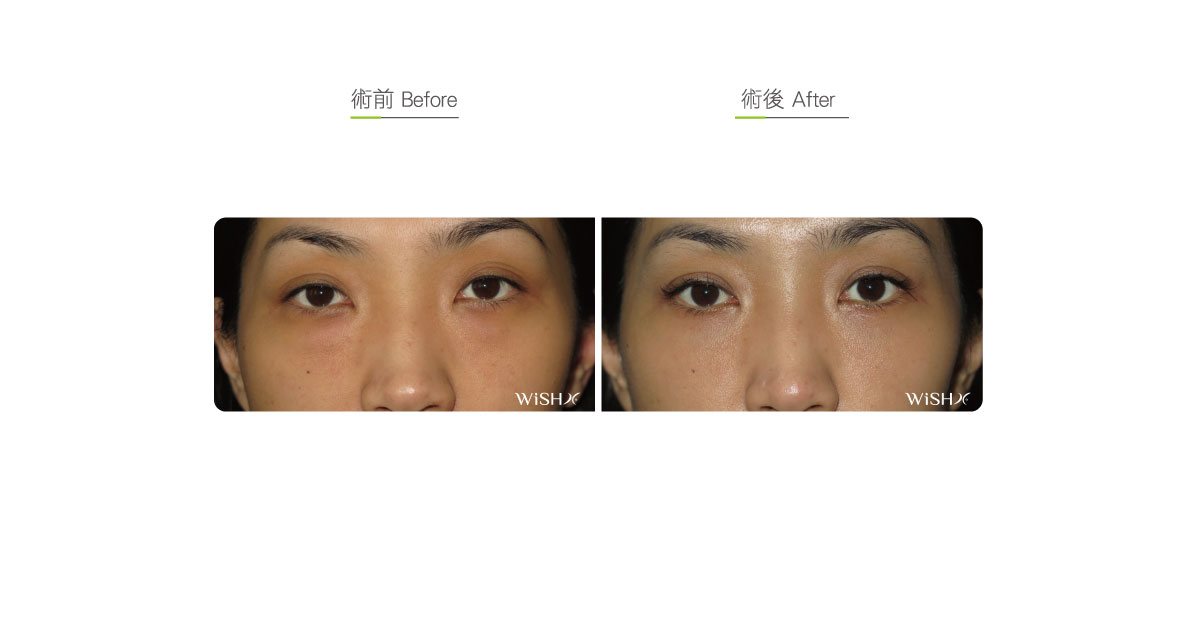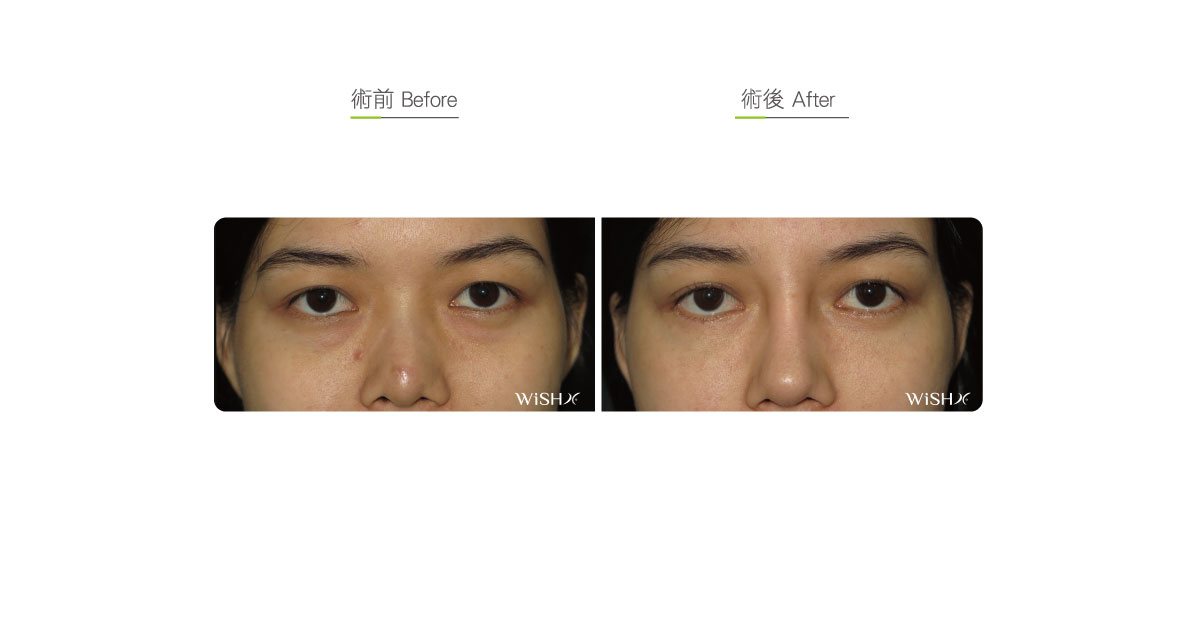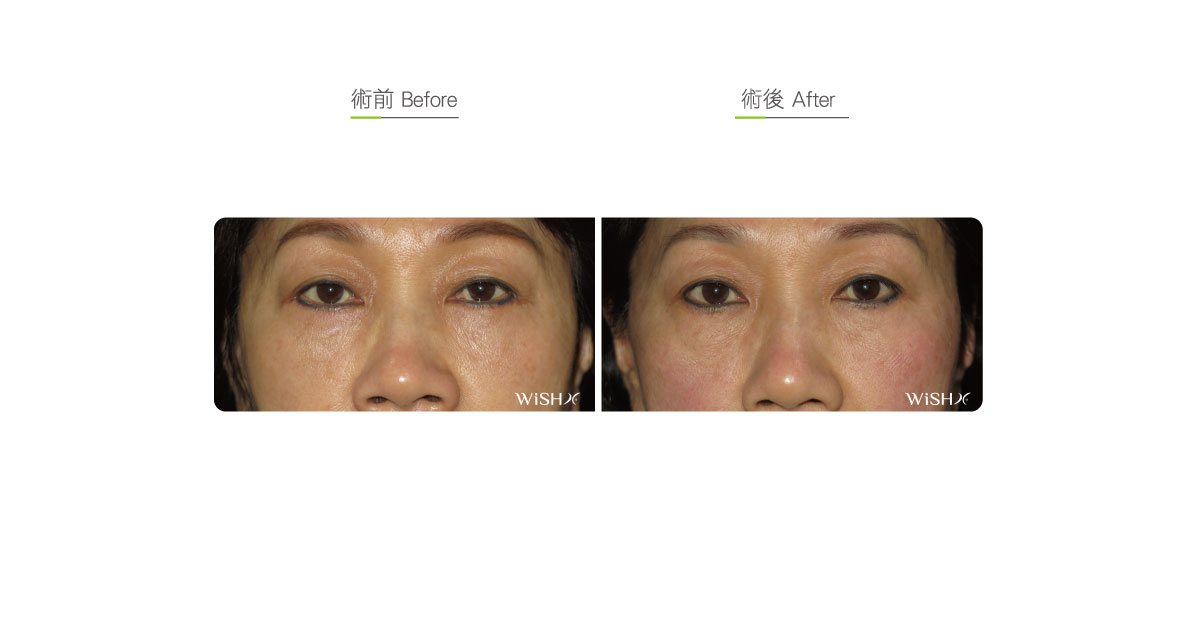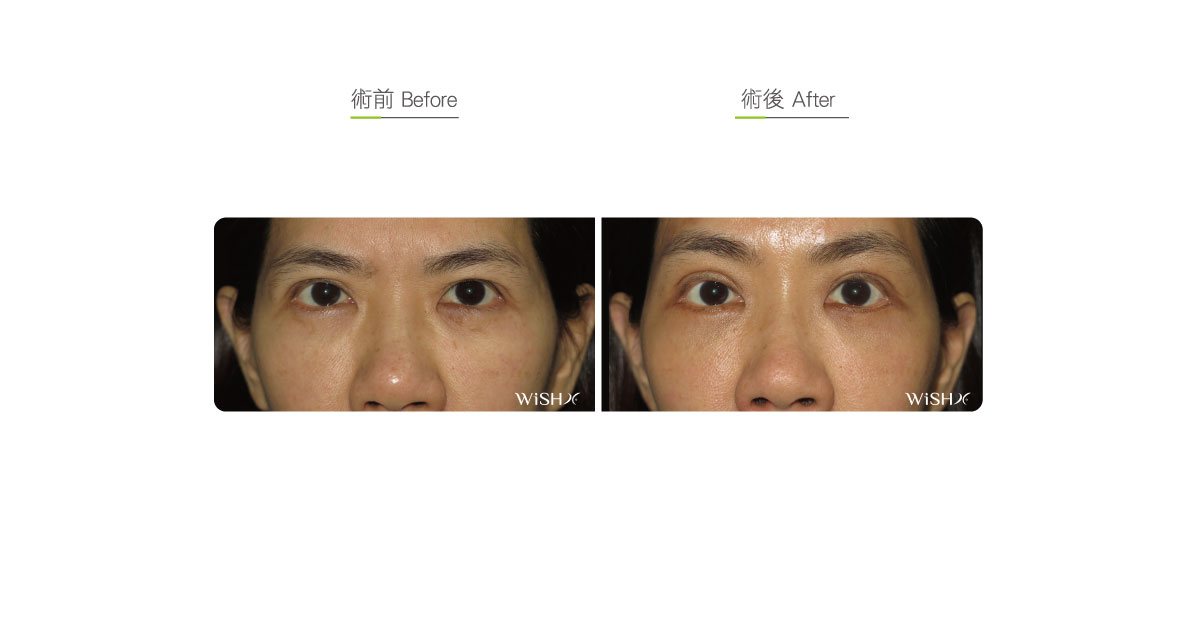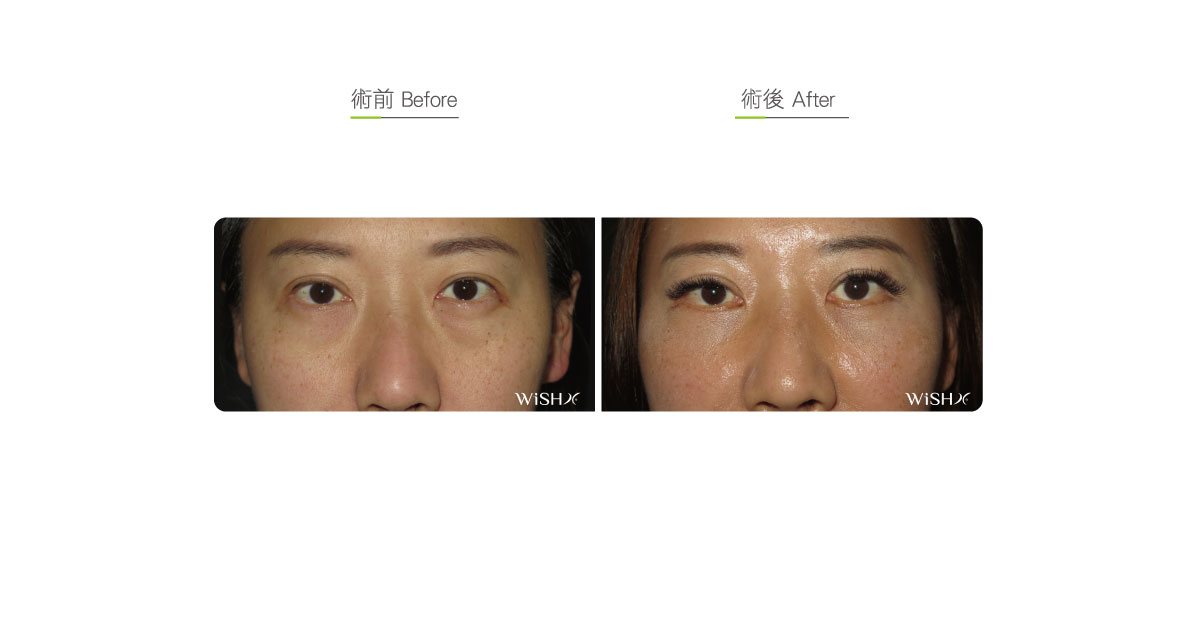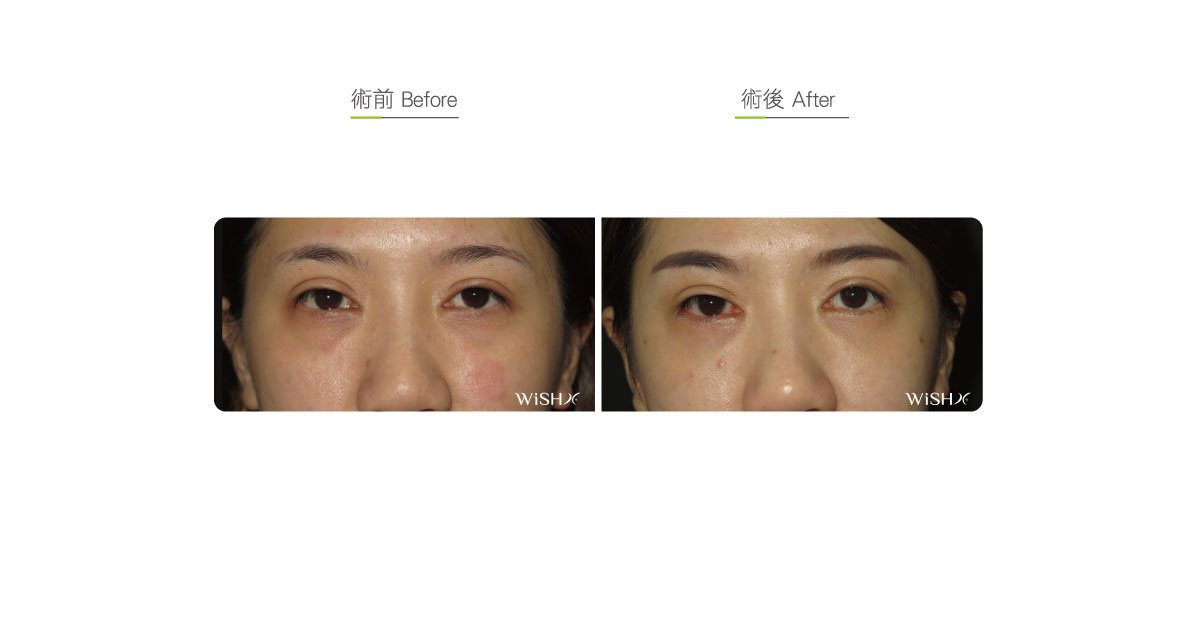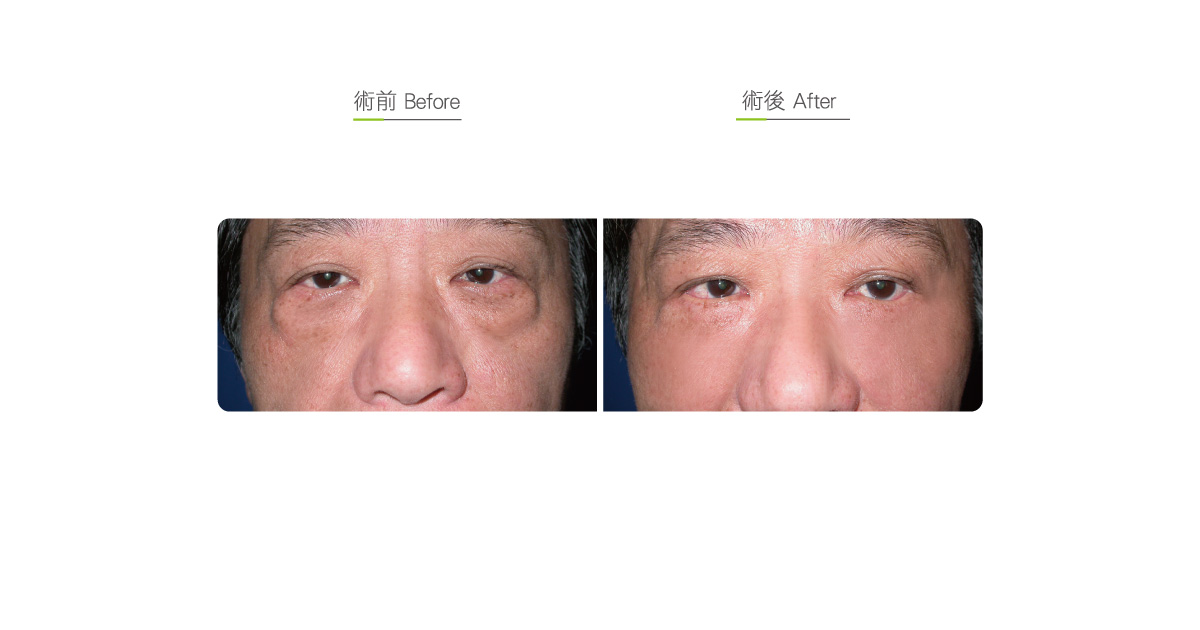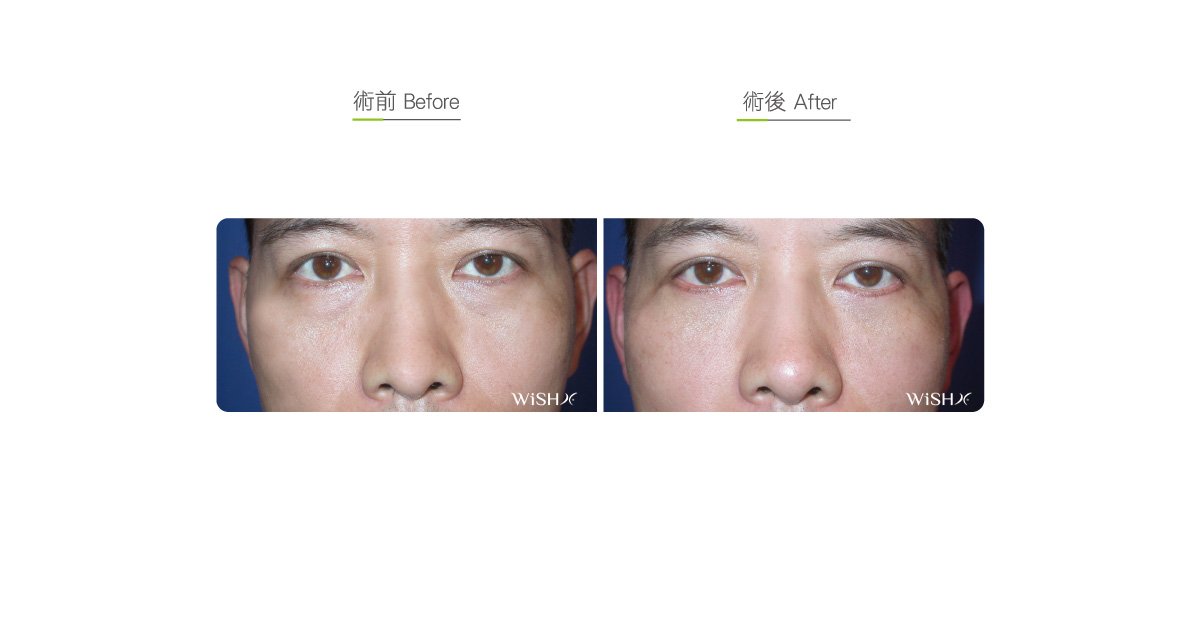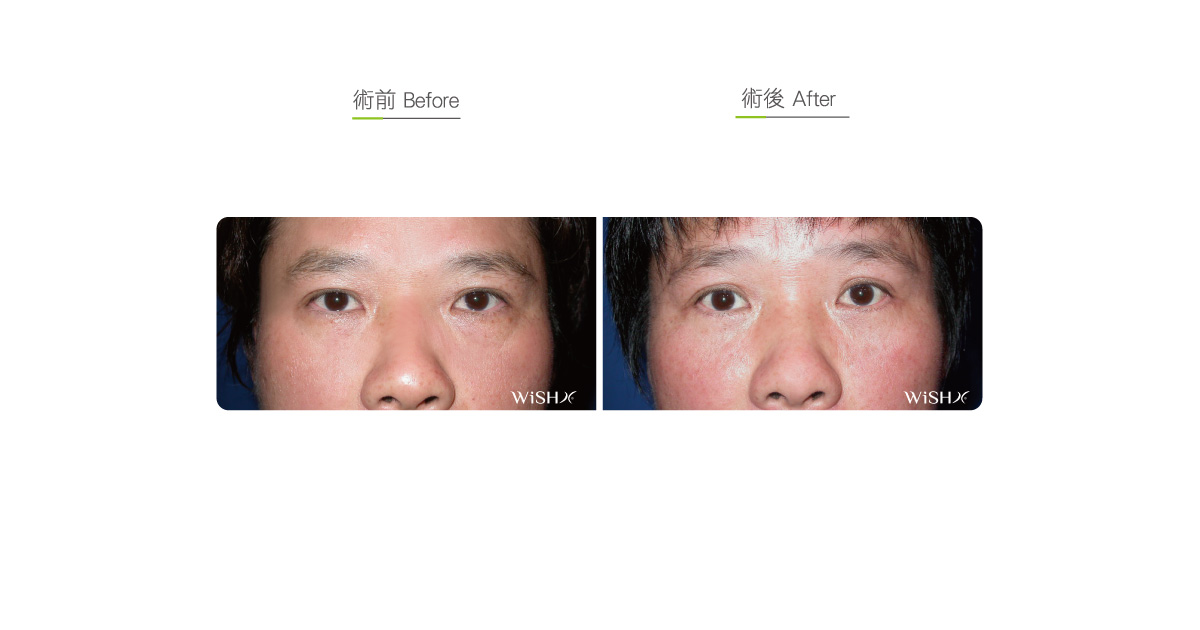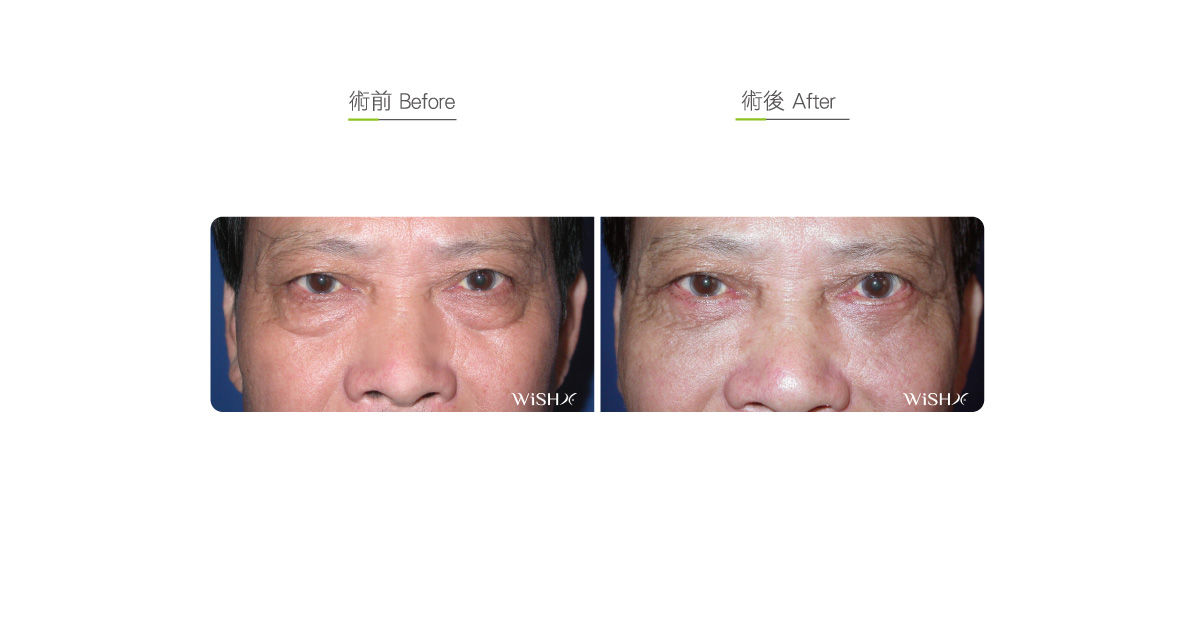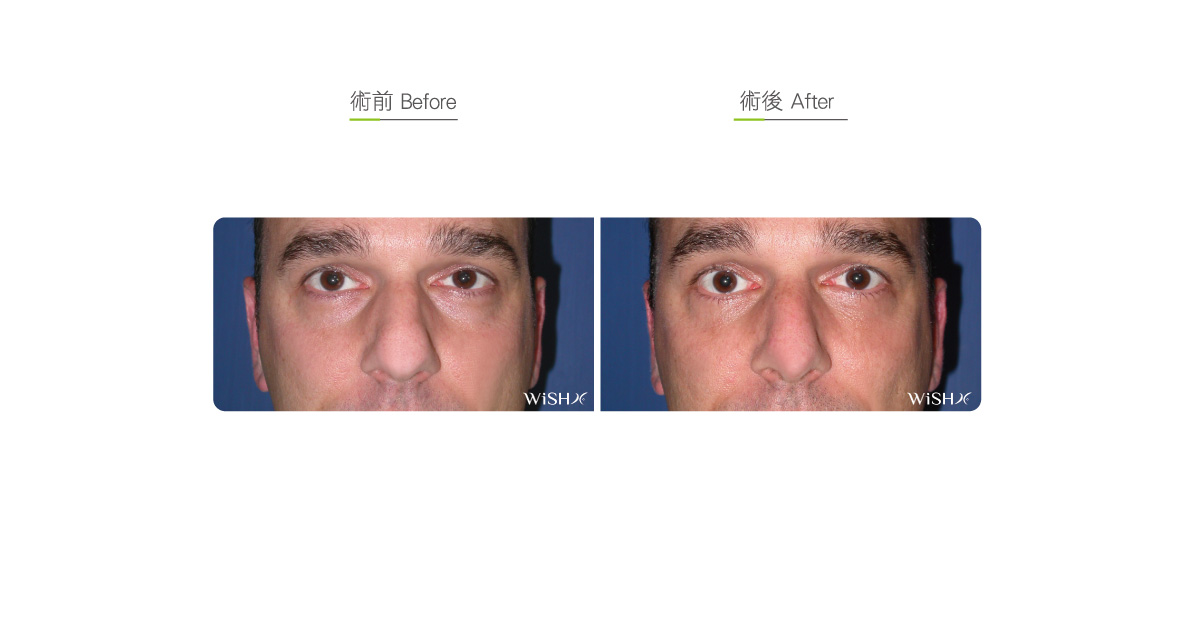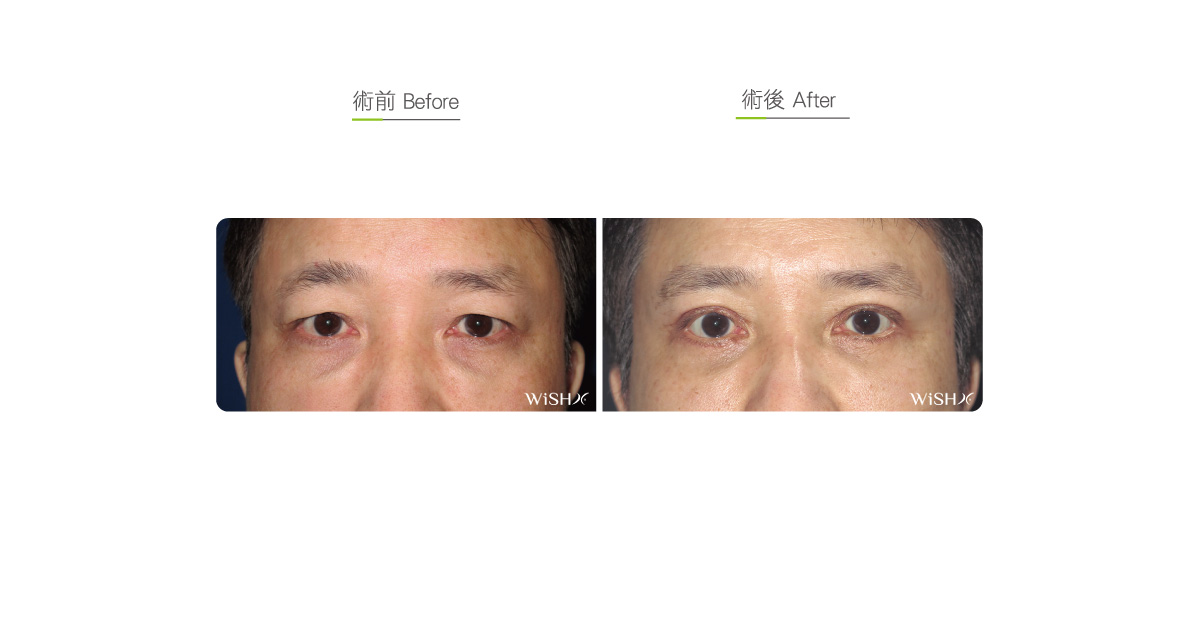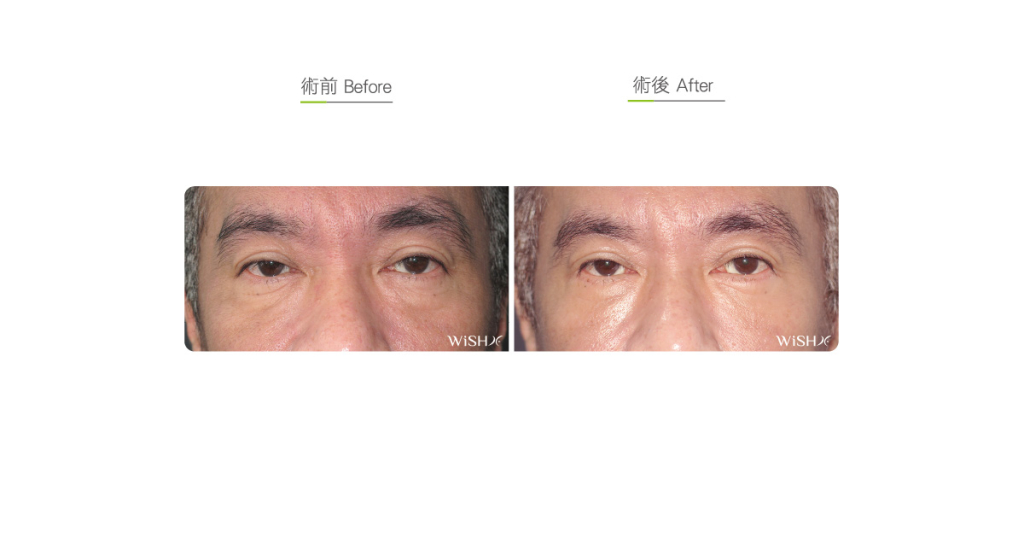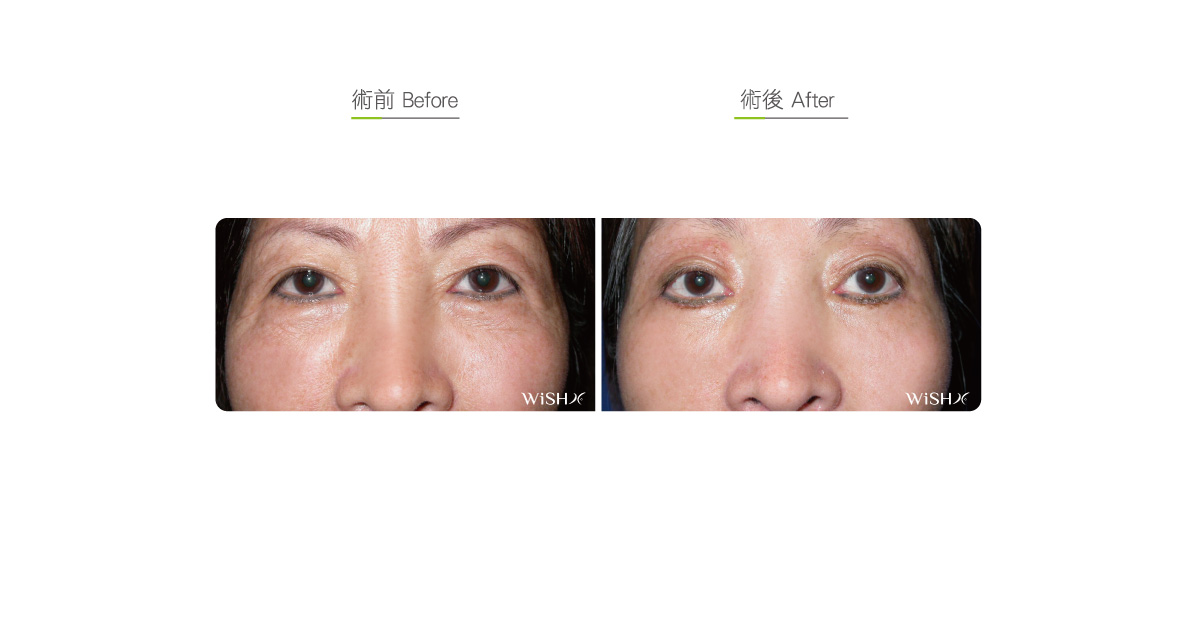Lower Blepharoplasty
This is also called external incision lower eye bag surgery. It is mainly aimed at correcting the eye bag bulge combined with lower eyelid laxity or an exceedingly deep tear-trough groove or any problems unable to be corrected by trans-conjunctival incision eye bag removal (non-scar eye bag removal), which achieve bulged fat removal, eyelid suspension, and tear trough-groove correction; it is the most radical lower eye bag surgery. An incision is made from the medial canthus to the lateral canthus along the lower eyelash margin to first extract the excess and bulged fat pads in the eye pouch and repair the adipose fascia to prevent future relapse. Then, the partial fats are transferred and grafted to the depression of the tear-trough groove; the excess loose lower eyelid skin due to fat removal is resected properly, then the eyelid is suspended and fixated to the lateral canthus. This technique not only effectively alleviates eye pouch and tear-trough depression but also lifts and suspends the lower eyelid skin to prevent fine lines or skin looseness after surgery; it can even be combined with regional midface lift to improve the nasolabial folds or mouth corner drooping. Therefore, its applications would be customized to individuals.
In addition, some patients with congenital inferior eye socket depression (depressed eye pouch) or severe tear-trough depression due to a previous eye bag removal undergo concurrent tear-trough groove filling with autologous fats (free fat grafts) via this technique to level the eye pouch and tighten the eyelids. The fats are harvested from the periphery of the umbilicus or the medial thighs, which sustain long-term and harmonic results.
Surgical conditions
Duration
- Type of anesthesia: IV sedation + local anesthesia
- Surgical incision: From the medial canthus to the lateral canthus along the eyelash margin at the inferior eyelid (sub-ciliary incision)
- Recovery: 7–10 days
- Removal of stitches: 7 days
General instructions
No food and water on the day of surgery
- Frequently apply warm compresses to the eyes for 1 month postoperatively to help subside the swelling.
- Abstain from smoking for 3 months postoperatively, and frequently perform periocular massage such as forced eye closure or upward pushing of the eyelids.
Ideal candidates
- Patients with distinct eye bag bulging and inferior eyelid laxity
- Those with an aging eye pouch
- Those with severe tear- -through depression which that cannot be corrected by a filler or a simple fat injection
- Those with congenital eye socket depression (it should be combined with free fat grafts)
- Those who underwent have undergone trans–conjunctival incision eye bag removal but show recurrence in a the short term
- Those who want to prevent any complications like such as lower eyelid wrinkles or fine lines due to eye bag removal
Potential complications
- Temporary epiphora
- Eye shape change
- Scar adhesion
- Palpebral ectropion
- Youthline shrinkage
Surgical advantages
-
It effectively smooths the eye pouch and improves the skin laxity of the lower eyelid.
-
It effectively improves the tear- -through depression with a long- term result.
-
It reduces fine lines or wrinkles at the inferior eyelid concurrently with eye bag removal.
-
The sSurgical results last for a relatively long time (approximately 8–10 years).
-
It achieves regional suspending lift to alleviate midface drooping.
Surgical drawbacks
-
The sSurgical incision is long and may leave a scar.
-
The pPostoperative recovery is relatively slow (approximately 7–10 days).
-
It may cause palpebral ectropion due to excess skin resection or scar adhesion.
-
The size and shape of the youthlines may be reduced and changed.
-
The eyes may present temporary shrinkage or change in expression.
Possible procedures in conjunction
Comparison of lower eye bag surgeries
| Non-scar eye bag removal (internal incision method) | Lower blepharoplasty (external incision method) | |
|---|---|---|
| Ideal candidates | Patients with a mild eye bag or tear-trough groove but without eyelid skin laxity | Patients with distinct eye pouch or skin laxity or an excessively deep tear-trough depression (aging eye pouch) |
| Surgical incision | Internal margin of the tarsal plate (trans-conjunctival incision) | An incision at the inferior margin of the eyelid along the eyelash (sub-ciliary incision) |
| Length | Short (approximately 0.5 cm) | Long (approximately 2.5–3 cm) |
| Surgical duration | Short (approximately 40 min) | Relatively long (approximately 1.5 h) |
| Scar | No | Probable |
| Tear trough groove correction | Mild | Complete |
| Surgical recovery | Rapid (approximately 3–5 days) | Relatively slow (approximately 7–10 days) |
| Result durability | Short (approximately 3–5 years) | Relatively long (approximately 8–10 years) |
| Skin tightness | No | Yes |
| Palpebral ectropion | No | Probable |
| Youthline change | No | Yes |
| Stitch removal | No | Yes |

